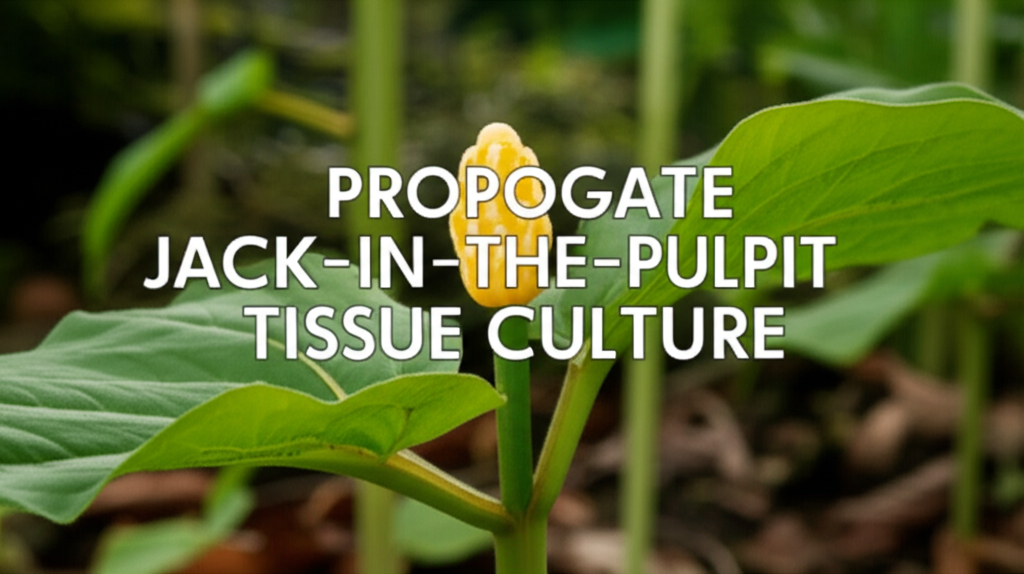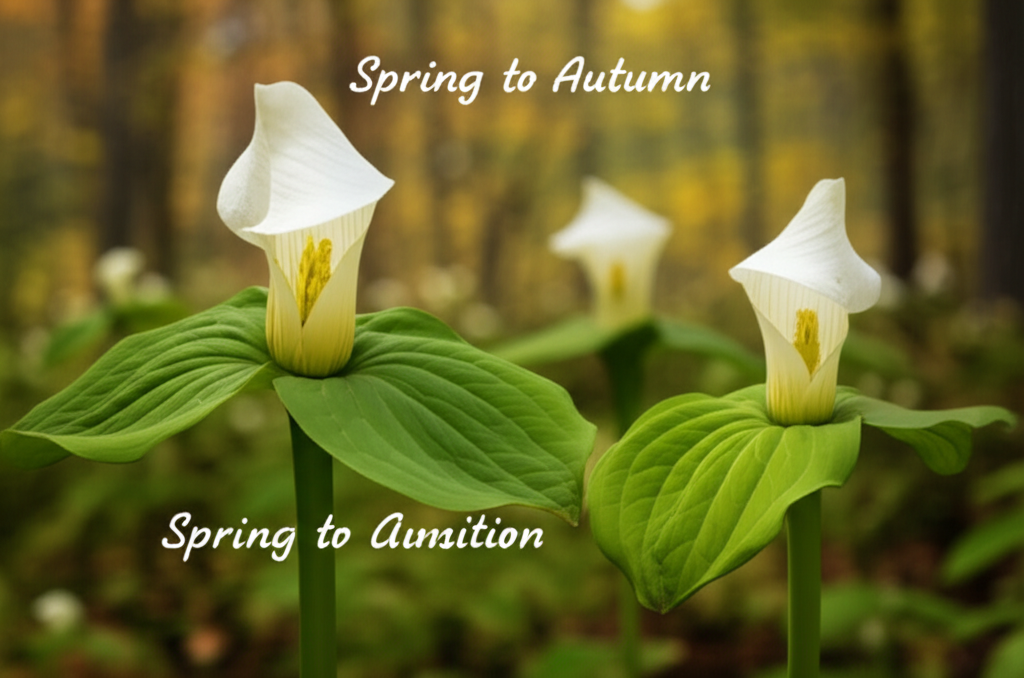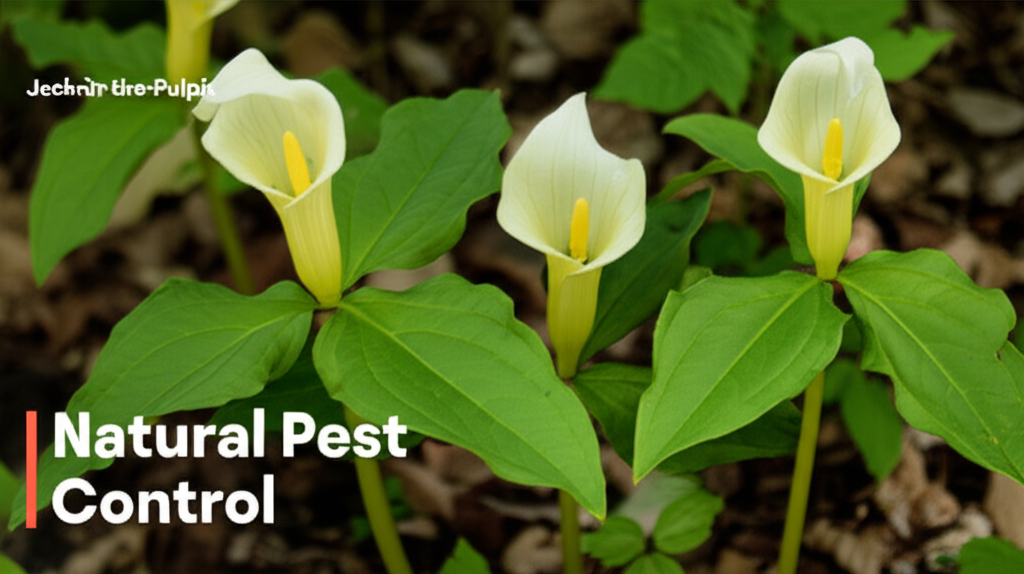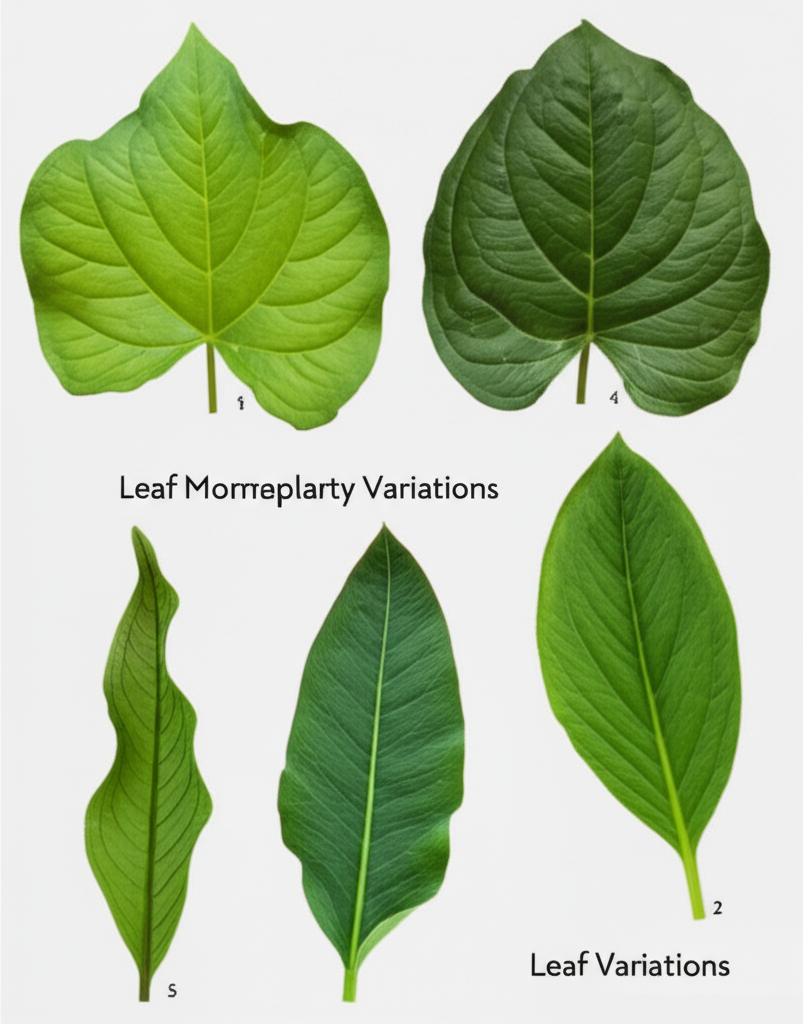Introduction to Jack-in-the-Pulpit and Its Propagation Challenges
Jack-in-the-Pulpit (Arisaema triphyllum) is a fascinating and ecologically significant woodland perennial native to eastern North America. Its unique spathe and spadix, resembling a pulpit with a preacher inside, make it a sought-after plant for shade gardens. However, natural propagation of Jack-in-the-Pulpit can be slow and challenging. Traditional methods like seed germination require specific stratification periods and can take years to produce a flowering plant. Corm division is more reliable but results in a limited number of new plants from a single parent. These limitations, coupled with increasing interest in native plant cultivation and conservation, highlight the need for more efficient and scalable propagation techniques. Tissue culture, also known as micropropagation, offers a promising solution, enabling the rapid multiplication of plant material under sterile conditions. This article delves into the intricacies of propagating Jack-in-the-Pulpit through tissue culture, outlining the process, essential considerations, and potential benefits.
Understanding the Principles of Plant Tissue Culture
Plant tissue culture is a collection of techniques used to maintain or grow plant cells, tissues, or organs under sterile conditions on a nutrient culture medium of known composition. The fundamental principle behind tissue culture is the concept of totipotency, the ability of a single plant cell to divide, differentiate, and regenerate into a whole plant.
Several key factors are crucial for successful tissue culture:
- Sterile Environment: To prevent contamination by bacteria, fungi, and other microorganisms that can outcompete the explant or kill it.
- Nutrient Medium: Provides essential macro- and micronutrients, vitamins, amino acids, and a carbon source (typically sucrose) for plant growth.
- Plant Hormones (Phytohormones): Crucial for controlling cell division, differentiation, and organogenesis. Auxins and cytokinins are the most commonly used classes.
- Environmental Conditions: Controlled temperature, light intensity, and photoperiod are necessary for optimal growth and development.
Key Stages in Jack-in-the-Pulpit Tissue Culture
Propagating Jack-in-the-Pulpit via tissue culture typically involves several distinct stages, each requiring careful attention to detail.
Stage 0: Explant Selection and Preparation
The success of any tissue culture project begins with the selection of appropriate starting material.
- Source Material: Healthy, vigorous Jack-in-the-Pulpit plants are ideal. Corms or actively growing leaf buds are common explant sources. For Arisaema triphyllum, young, developing corms or shoot tips from emerging leaves are often preferred.
- Sterilization: This is a critical step to eliminate surface-borne contaminants. A common sterilization protocol involves:
- Washing the explant under running water to remove debris.
- Immersion in a dilute detergent solution, followed by rinsing.
- Treatment with a sterilizing agent, such as 70% ethanol for 30 seconds to 1 minute, or a dilute bleach solution (e.g., 10-20% commercial bleach with a few drops of Tween 20 or a similar surfactant) for 10-20 minutes.
- Thorough rinsing with sterile distilled water (at least three times) to remove all traces of the sterilizing agent.
- Explant Dissection: Once sterilized, the explant is dissected into smaller, manageable pieces under aseptic conditions in a laminar flow hood or a sterile transfer chamber. For corms, small sections containing meristematic tissue are excised. For shoot tips, the surrounding leaf sheaths are removed to expose the apical meristem.
Stage 1: Initiation and Establishment
This stage involves placing the prepared explants onto a sterile nutrient medium designed to promote initial growth and callus formation or direct organogenesis.
- Culture Medium: A basal medium like Murashige and Skoog (MS) or Gamborg’s B5 is often used, supplemented with essential nutrients. For Arisaema triphyllum, the medium needs to be carefully balanced with plant hormones.
- Hormone Regulators: The choice and concentration of plant hormones are paramount.
- Cytokinins: Such as N6-benzylaminopurine (BAP) or kinetin, are typically used to promote cell division and shoot proliferation.
- Auxins: Such as indole-3-acetic acid (IAA) or naphthaleneacetic acid (NAA), are used in combination with cytokinins to encourage callus formation or root development.
A common starting point might involve a medium with a specific ratio of cytokinin to auxin, for example, 1-2 mg/L BAP and 0.1-0.5 mg/L IAA.
- Incubation: Cultures are incubated in a growth room or incubator at a controlled temperature (typically 20-25°C) with a long photoperiod (16 hours light/8 hours dark) under low light intensity.
Stage 2: Multiplication
Once the explants have established and begun to grow, the focus shifts to rapid multiplication of shoots.
- Subculturing: Developing shoots are regularly transferred to fresh medium (every 2-4 weeks) to provide a continuous supply of nutrients and prevent the accumulation of inhibitory metabolites.
- Hormone Optimization: The hormone balance may need to be adjusted to favor shoot proliferation over callus growth. Higher cytokinin to auxin ratios are generally used at this stage.
- Adventitious Bud Formation: In some cases, direct shoot formation from the explant or callus may occur, leading to the development of multiple shoots.
Stage 3: Rooting
After sufficient shoot development, the next step is to induce root formation.
- Hormonal Induction: Shoots are typically transferred to a medium with a lower concentration of cytokinins and a higher concentration of auxins. An auxin like indole-3-butyric acid (IBA) at 0.5-2 mg/L is often effective for root induction.
- Nutrient Depletion: Sometimes, reducing the nutrient concentration or removing sucrose from the medium can also promote rooting.
- Incubation: Cultures are incubated under similar conditions as the multiplication stage, but with a focus on root development.
Stage 4: Acclimatization and Ex Vitro Growth
This is a critical transition phase where plantlets are moved from the sterile, high-humidity environment of the culture vessel to the less controlled conditions of the greenhouse or outdoor environment.
- Hardening Off: Plantlets with well-developed roots are carefully removed from the culture medium and their roots are gently washed to remove residual agar.
- Planting Medium: They are then potted into a sterile, well-draining potting mix, such as a blend of peat moss, perlite, and vermiculite.
- Controlled Environment: Initially, plantlets are kept in a high-humidity environment (e.g., covered with a plastic dome or placed in a propagator) and gradually exposed to lower humidity levels over several weeks.
- Gradual Introduction to Light: Light intensity is also gradually increased to prevent scorching.
- Post-Acclimatization Care: Once acclimatized, they are treated as young seedlings, receiving appropriate watering, fertilization, and protection from extreme temperatures and pests.
Factors Influencing Tissue Culture Success for Arisaema triphyllum
Several factors can significantly impact the efficiency and success rate of Jack-in-the-Pulpit tissue culture.
Genetic Variability and Explant Source
The genetic makeup of the parent plant can influence its response to tissue culture. Some genotypes may be more recalcitrant or prone to somaclonal variation (genetic or epigenetic changes occurring during tissue culture). The age and physiological state of the explant are also crucial. Actively growing young tissue generally performs better than older, dormant material.
Medium Composition and Hormonal Balance
Optimizing the basal medium composition and, most importantly, the type and concentration of plant hormones is key. Different species and even different genotypes within a species may require unique hormonal regimes. Extensive experimentation is often necessary to find the optimal balance for induction, proliferation, and rooting.
Sterility and Contamination Control
Maintaining strict aseptic techniques throughout the entire process is paramount. Even a minor contamination event can lead to the loss of an entire culture. Regular monitoring for signs of microbial growth and immediate discarding of contaminated cultures are essential.
Environmental Conditions
Consistent and appropriate temperature, light intensity, and photoperiod play vital roles in plant development within the culture vessels. Fluctuations can stress the tissues and hinder growth.
Benefits of Tissue Culture for Jack-in-the-Pulpit Propagation
Micropropagation offers several advantages over traditional propagation methods for Jack-in-the-Pulpit.
Rapid Multiplication
Tissue culture allows for the rapid multiplication of plant material from a single parent plant in a relatively short period, producing thousands of plantlets. This is particularly valuable for conservation efforts or for commercial production.
Production of Disease-Free Plants
Under sterile conditions, it is possible to produce plants that are free from systemic pathogens, which can be a significant advantage for plant health and longevity.
Year-Round Propagation
Unlike seasonal propagation methods, tissue culture can be carried out year-round, independent of external environmental conditions.
Conservation of Rare or Endangered Species
For species that are slow to reproduce naturally or are at risk, tissue culture provides a vital tool for their preservation and reintroduction into their natural habitats.
Facilitation of Genetic Improvement Programs
Tissue culture techniques can be integrated with other biotechnological tools, such as genetic engineering or somatic hybridization, to develop improved varieties.
Challenges and Limitations of Tissue Culture
Despite its advantages, tissue culture is not without its challenges.
High Initial Setup Costs
Establishing a tissue culture laboratory requires significant investment in specialized equipment (laminar flow hoods, autoclaves, incubators, sterile supplies) and a dedicated sterile working space.
Technical Expertise Required
Successful tissue culture demands skilled personnel with a thorough understanding of aseptic techniques, plant physiology, and the specific requirements of the species being propagated.
Potential for Somaclonal Variation
As mentioned earlier, genetic or epigenetic changes can occur during tissue culture, leading to plants that differ from the parent genotype. This can be undesirable if consistent traits are required.
Acclimatization Difficulties
The transition from the highly controlled environment of the culture vessel to ex vitro conditions can be challenging, with high mortality rates if not managed carefully.
Cost-Effectiveness for Large-Scale Production
While efficient for rapid multiplication, the labor-intensive nature and specialized requirements can make large-scale commercial propagation via tissue culture more expensive than conventional methods for some plant species.
Key Facts and Comparison
Here’s a comparative overview of Jack-in-the-Pulpit propagation methods:
| Propagation Method | Speed of Multiplication | Plantlet Quality | Cost per Plantlet (Initial) | Effort Required | Disease-Free Potential |
|---|---|---|---|---|---|
| Seed Germination | Very Slow (Years to flowering) | Variable, depends on seed source | Low | High (stratification, patience) | Low (unless treated) |
| Corm Division | Slow (Few plants per division) | Generally High | Moderate | Moderate | Moderate (depends on parent health) |
| Tissue Culture | Very Fast (Thousands of plantlets) | Can be High (but risk of variation) | Very High | Very High (skill and precision) | High |
Pros and Cons of Tissue Culture for Arisaema triphyllum
A breakdown of the advantages and disadvantages specific to propagating Jack-in-the-Pulpit using tissue culture.
| Pros | Cons |
|---|---|
| Rapid generation of large numbers of plantlets from limited parent material. | Requires specialized sterile laboratory facilities and equipment. |
| Production of genetically identical (clonally propagated) plants. | High risk of contamination if sterile techniques are not meticulously followed. |
| Potential to produce plants free from soil-borne pathogens. | Plant hormones can be expensive and require careful optimization. |
| Enables propagation of plants that are difficult to propagate by conventional means. | Acclimatization can be a bottleneck with high plantlet mortality. |
| Year-round propagation capability. | Potential for somaclonal variation, leading to unintended genetic changes. |
| Facilitates the conservation of wild populations. | Labor-intensive and requires significant technical expertise. |
Conclusion and Future Directions
Tissue culture presents a powerful and effective method for the mass propagation of Jack-in-the-Pulpit. While it demands a significant investment in terms of resources and expertise, the benefits of rapid multiplication, disease-free plant production, and conservation potential make it an invaluable tool for botanists, horticulturists, and conservationists alike. Continued research into optimizing media formulations, hormone concentrations, and acclimatization protocols tailored specifically for Arisaema triphyllum will further enhance the efficiency and success of this technique. As interest in native plants and sustainable horticulture grows, micropropagation of species like Jack-in-the-Pulpit will play an increasingly vital role in ensuring their availability for gardens and ecological restoration efforts.



